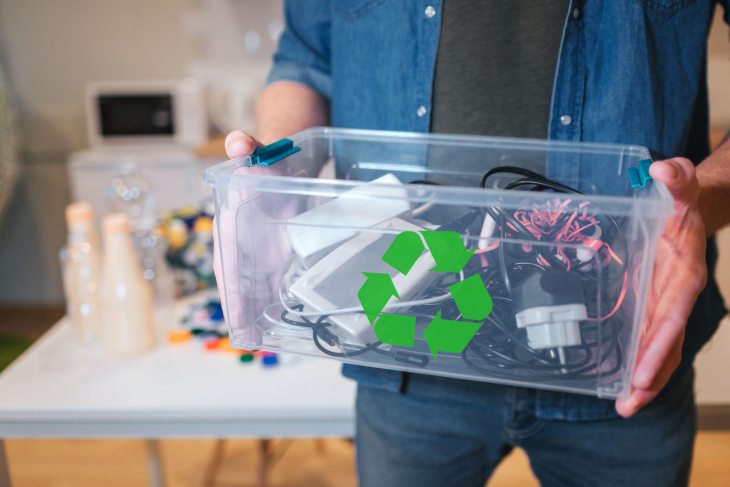The Role of IT Asset Disposition Companies in Sustainable Tech Management

IT Asset Disposition (ITAD) is a body of best practices for securely recycling, repurposing, or otherwise disposing of obsolete or unwanted equipment. ITAD companies help businesses to manage the disposition of IT assets, such as computers, servers, and other high-tech hardware. Key elements of that process involve securely destroying data, maximizing the salvage value of IT assets, and taking proactive steps to positively impact the environment.
The production and disposal of technology hardware often raises significant environmental concerns, including the depletion of natural resources, energy consumption, and potential pollution. Sustainable practices in tech management aim to minimize these impacts by maximizing re-use and recycling, minimizing e-waste in landfills, and promoting the use of environmentally friendly materials and processes.
ITAD companies play a pivotal role in sustainable tech management, overseeing the late stages of the technology product lifecycle while also ensuring data security, easing compliance, and delivering value to the bottom line.
The Growing Need for Sustainable Tech Management
In recent years, interest has been growing in the concept of the circular economy. That term describes a vision for reusing and recycling products and raw materials for as long as possible, reducing the need to further deplete the earth’s natural resources. This practice also minimizes the quantity of waste sent to landfills, which can potentially expose groundwater and soil to the risk of contamination.
At the same time, the pace of technological innovation has accelerated dramatically, leading to shorter life cycles for tech products. That means shorter turnover times for equipment, and the potential for significant increases in electronic waste. E-waste is one of the fastest-growing sources of solid waste globally, so the need for sustainable ways of managing technology is expanding rapidly.
Regulatory and societal pressures are also increasing the need for sustainable practices. As more people recognize the growing impact of e-waste on our environment, both consumers and regulators are paying closer attention to the need for meaningful solutions.
The Role of ITAD Companies in Sustainable Practices
ITAD companies are at the center of those solutions, offering safe and environmentally friendly disposition of IT equipment.
The IT asset disposition process begins with secure, auditable destruction of the data stored on unwanted equipment. This helps companies to avoid data breaches, privacy violations, and compliance issues.
Next, ITAD services companies identify equipment and components that may still be usable, salvaging spare parts, repairing and refurbishing items, and offering unwanted assets for sale.
When equipment is no longer usable, ITAD companies strive to avoid sending any e-waste to landfills. The outer casings of many devices, for example, are made of recyclable plastic. IT equipment components also include metal parts and materials that can be reclaimed.
Finally, ITAD companies provide detailed reports to account for the disposition of unwanted IT equipment. By clearly documenting the process, they can certify that end-of-life assets have been handled securely, responsibly, and in compliance with relevant laws and regulations.
Case Studies: Success Stories of ITAD in Action
As a leader in the ITAD space, NCS Global works with clients all over the world. When a global shipping company needed to implement on-site shredding of drives in multiple states within six hours, for example, they called upon NCS to get the job done. This operation not only ensured 100% data security, but also prevented significant greenhouse gas emissions.
Unlike many other ITAD organizations that simply talk about sustainability, NCS Global embraces sustainability in everything we do, making it a top priority in our day-to-day operations. That’s why we’ve been recognized with certifications from Ecovadis, e-Stewards, and other leading organizations that care about environmental sustainability.

The Process of IT Asset Disposition
IT asset disposition comprises a well-defined body of best practices. The end-to-end process includes:
1. Inventory Management: Keeping track of the IT assets throughout their lifecycle to ensure they are efficiently used and accounted for.
2. Data Destruction: To avoid data breaches and compliance issues, it’s critical to securely delete or destroy data contained in the devices to prevent data breaches. This can include hard drive shredding or secure erasure.
3. Recycling and Salvage: Next, components are salvaged for re-use, or recycled to avoid sending parts and materials to the landfill.
4. Remarketing: ITAD also involves recycling components that can’t be reused and remarketing those that can. This process not only recovers value but also ensures compliance with environmental regulations.
5. Regulatory Compliance: Reporting helps companies to comply with legal and environmental regulations such as the Waste Electrical and Electronic Equipment Directive (WEEE) in Europe or the Resource Conservation and Recovery Act (RCRA) in the US.
The best ITAD companies offer customized solutions for different types of organizations. Organizations that are subject to specific security protocols, for example, may be required to shred hard drives. Others may prefer secure erasure because of its thoroughness, efficiency, and cost-effectiveness. Some ITAD companies offer custom logistics, on-site services, global coverage, and complete integration with broader IT management strategies.
Benefits of Partnering with ITAD Companies
Partnering with an ITAD service provider offers multiple advantages. Companies benefit economically by saving on IT costs, extending the life of equipment and efficiently recapturing the salvage value of items that have reached the end of their useful life.
Companies can also lessen their impact on the environment. Consumers and regulators alike have increased their focus on sustainability. ESG reporting and sustainability accounting are evolving to accommodate this interest. Companies that can demonstrate their commitment to reducing their impact will be better positioned to win the loyalty of consumers and stay in the good graces of regulators as compliance standards evolve.
Future Trends in ITAD and Sustainable Tech Management
ITAD companies are bringing new innovations to their discipline, enhancing their offerings to address both environmental concerns and the evolving needs of businesses. Some are exploring the use of blockchain technology, for example, to provide transparent and verifiable records of the data destruction process. AI technology promises to bring new efficiencies to sorting and processing unwanted IT assets as well.
The future of ITAD will not only incorporate new innovations; the scope of the industry is certain to expand as the importance of sustainability in IT procurement comes into greater focus. Compliance and sustainability reporting are likely to be highly important in the not-too-distant future.
Conclusion
ITAD will undoubtedly play an increasingly important role in sustainable tech management. As consumers and regulators increase their scrutiny of environmentally responsible practices, companies must think in terms of the circular economy, adopting sustainable practices in IT asset management as they do.
